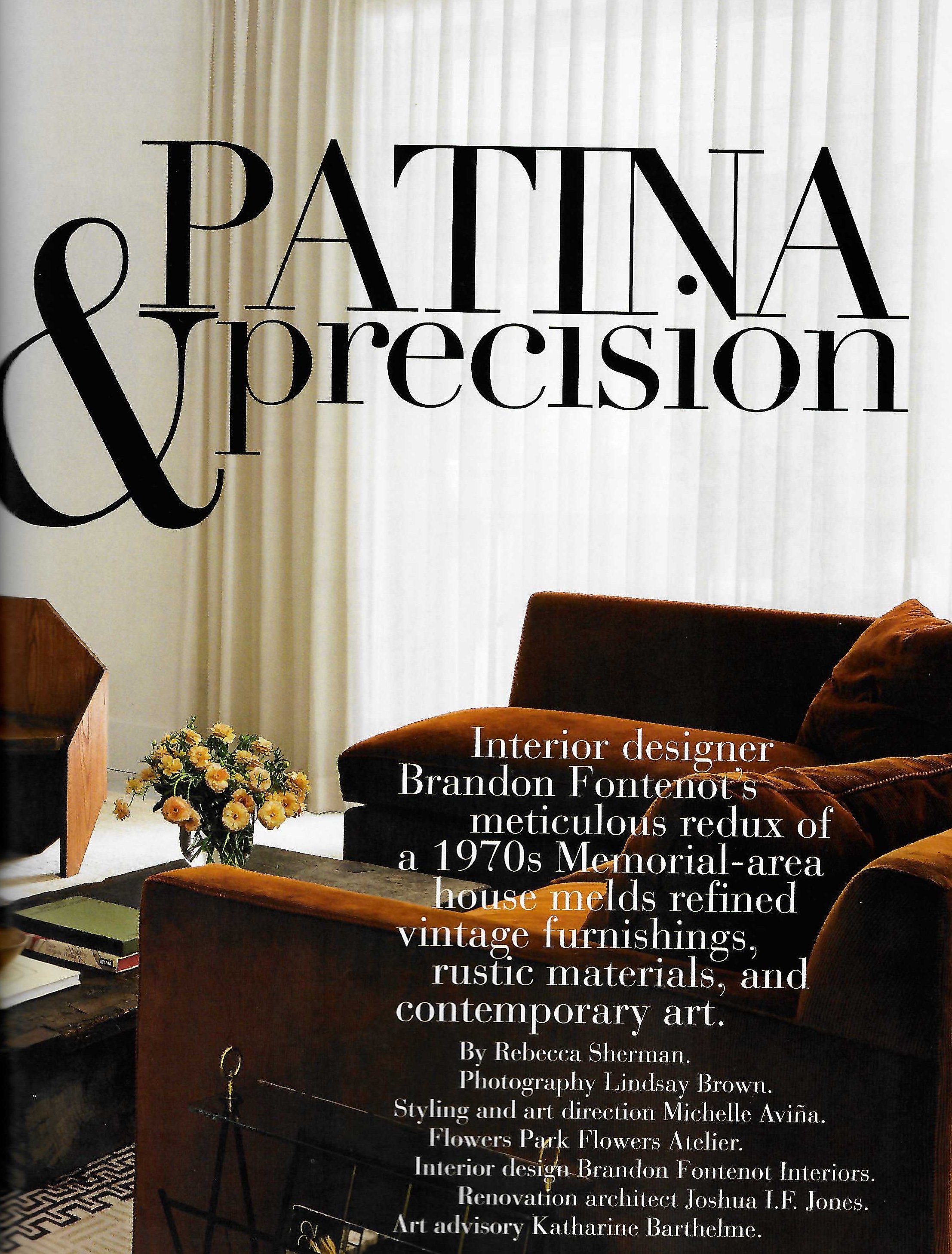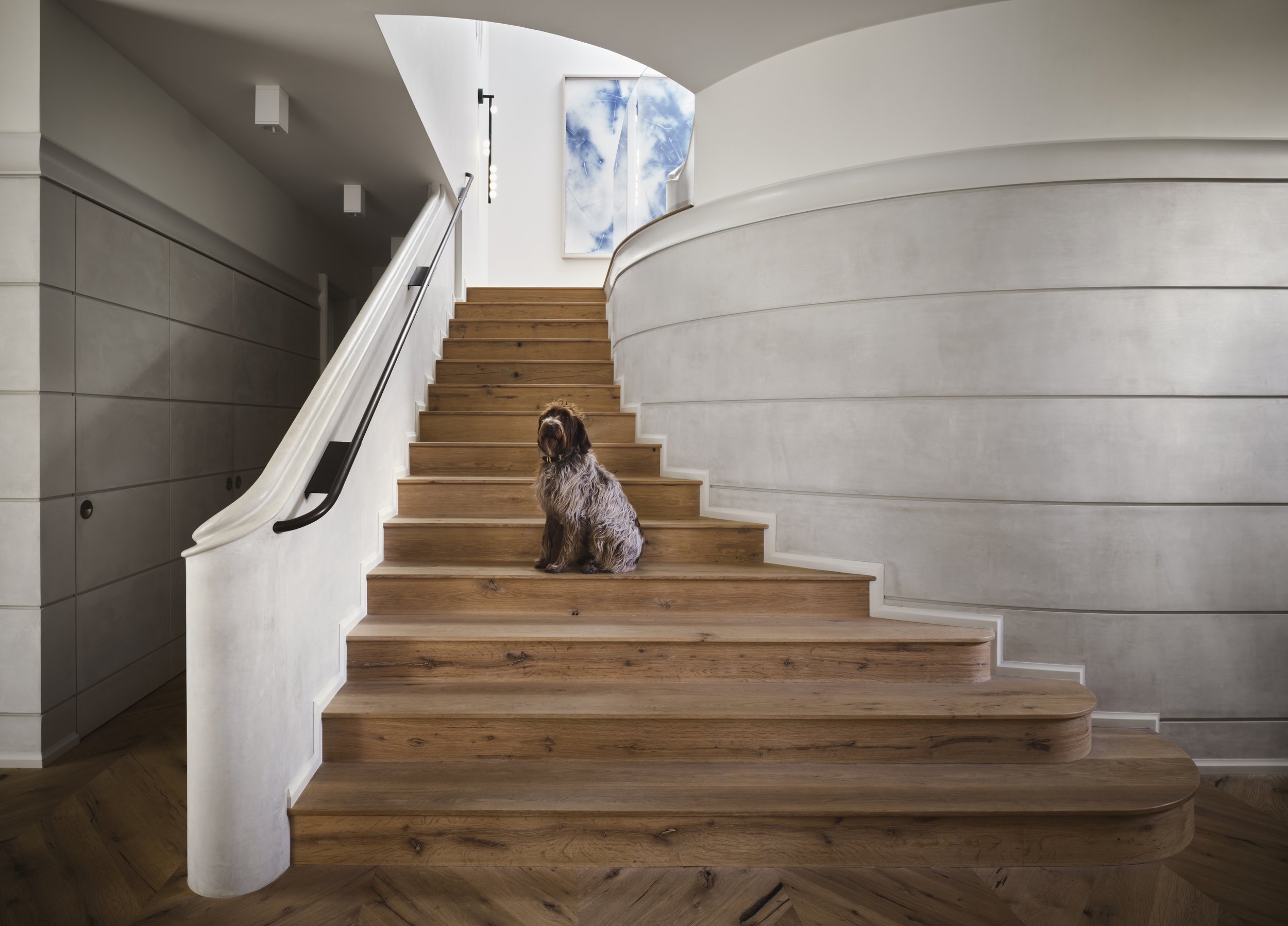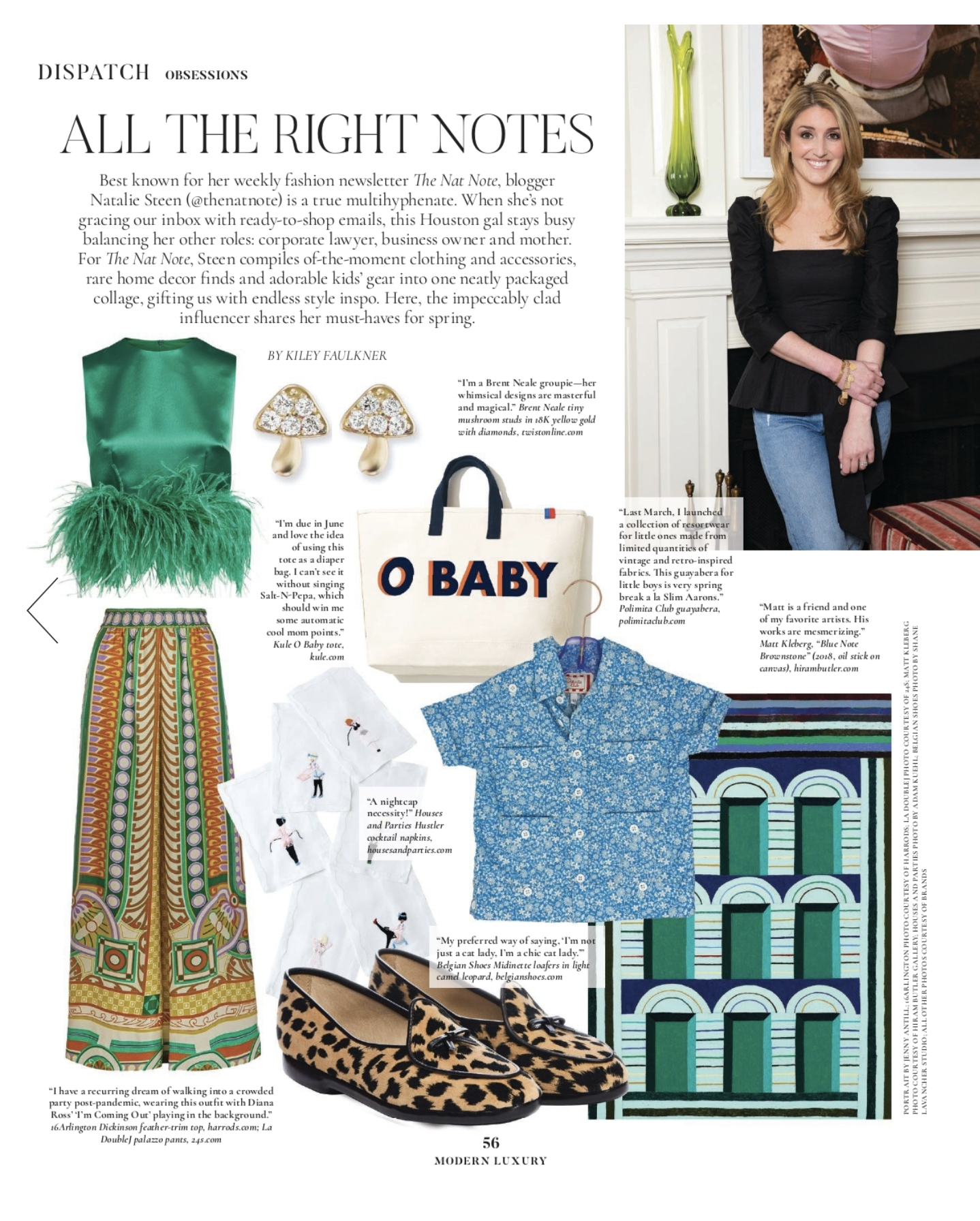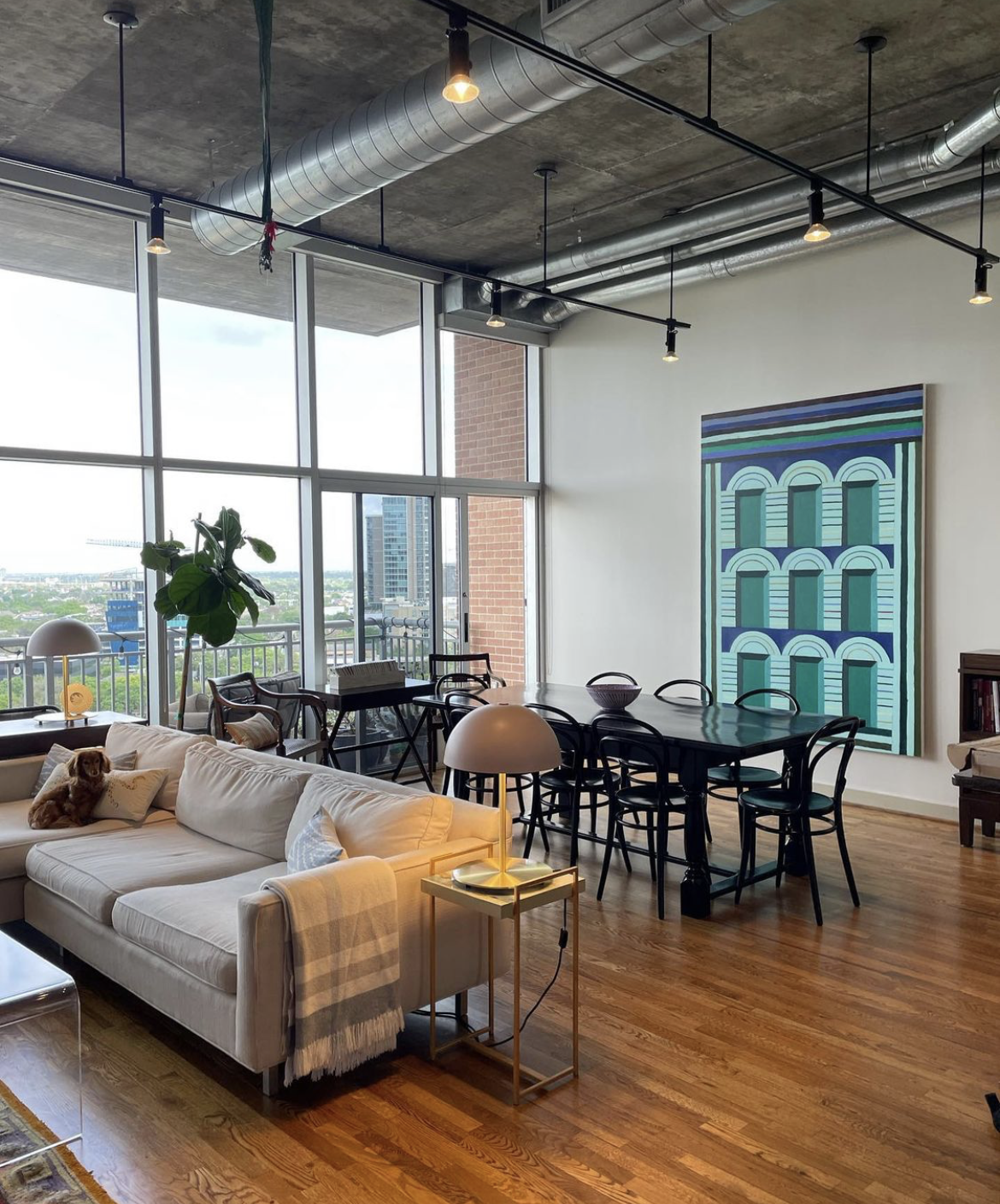By Amber Elliott, Staff writer Jan 28, 2025
Discuss Houston with an outsider and food, sports teams, the oil industry, and traffic are likely to enter the conversation. Parks and green space may laud an honorary mention. However, many overlook the city's less-discussed secret weapon: the arts.
Houston's Museum District rivals the best in the U.S. Nearby, Montrose is crawling with art galleries and some of the most diverse creative talent in Texas. Then there's the Theater District downtown. And a crop of young fashion designers making waves on a national stage.
A new generation of artists emerged post-pandemic. They make murals and immersive experiences. They dance with Houston Ballet — and for millions more on TikTok. They've opened unconventional spaces, online and in real-life, to share Houston's creativity with the world.
Here are the 47 Houstonians, age 40-ish and under, shaping the city's artful future.
Katharine Barthelme Photo: Fernanda Varela
It's been 11 years since Katharine Barthelme founded her eponymous Barthelme Art & Appraisals in 2014. She specializes in post war and contemporary art and advises Houston collectors on fine art acquisitions and divestitures.
Barthleme holds a master's degree from Sotheby's Institute of Art in London and a bachelor's degree from Santa Fe University of Art and Design. She currently serves on the board of the University of Houston's Blaffer Art Museum, Gulf Coast: A Journal of Literature and Fine Arts, and Inprint Houston.
Brandon Fontenot founded his interior design firm in Houston almost a decade ago, and since then he’s established himself through residential projects across the city which integrate the materiality of mother nature with contemporary art and antique flights of fancy. “How you arrange objects and components in a room,” he says, and indeed how you arrange the home itself, “is this idea of family. In Texas, you have these massive houses with all these rooms that blend together. How do you make them practical while still identifying each as its own space?”
Renovating a 7,000-square foot, five bedroom, seven bath house in Houston’s oak-lined Tanglewood neighborhood offered answers. The clients were a blended family who had recently returned to Houston so their son could go to school and play football. “That’s very Texas,” he says affectionately. Also very Texas was their sense of scale—that is to say, bigger is better. “They wanted everything to be super tall. But in a space where everything is shooting up, you feel like you’re in an elevator shaft.”
Fontenot had other feelings in mind. “When you enter, there’s maybe a five foot stance where the door is, and then it triangles out. And then the house is centered around a triangle courtyard too,” he says. “So the house is, like, triangle, triangle, triangle.” Ample windows create framed views of the woodsy exteriors. A walkway traces the angles which comprise the interior, which is largely open-plan. “It felt a little bit like an art fair to me,” Fontenot says of the procession of spaces, airy but potentially anonymous. The couple wanted to keep things open. “So instead of having walls the divide the rooms, we brought in wing walls to identify the spaces more.” These clearly mark zones for work and play, while cleverly referencing art fair booths. And those impulses operated simultaneously, as the design of the house came together alongside the striking painting, photography, sculpture, and antique furnishings he and art advisor Katharine Barthelme helped the couple collect.
Table and chairs by Guillereme et Chambron, art by Katherine Bradford, and pendant by Amy Meier. PHOTO: LINDSAY BROWN
A table from Italy, 1970s, art by Violeta Maya, and wall lights by Giancarlo Valle. PHOTO: LINDSAY BROWN
Art by Philip Guston and Davina Semo, a desk by Pierre Jeanneret, and a lamp by Jean Besnard PHOTO: LINDSAY BROWN
It can be said that a historic house is only as good as its bones, but oftentimes, it takes a little digging to find them. Such was the case for Carrie and Robert Hicks, who found their dream home in the form of a Tudor-inspired house built in 1926 in one of Austin’s oldest neighborhoods.
“We first fell in love with the location and the great big front yard. It was just a really wonderful space,” recalls Carrie, an interior designer who cut her teeth in New York and West Hollywood before settling down in Texas. The house had been through many hands in the nearly hundred years before the couple, who have three young children, took possession in 2015. Layers upon layers of misguided renovations had taken their toll. “The bones were there, and the structure was there, so the idea was to bring in Paul to save the historic 1926 house,” she continues, referring to architect Paul Lamb, who was in charge of the remodel.
But perhaps Lamb sums it up best himself: “You know that story about inheriting grandpa’s axe?” He inquires in his soft Texan twang. “First, the handle gives out, and he replaces the handle. Then, a couple of years later the head gives out, so he replaces the head. But it’s still grandpa’s axe.”
Despite the decades of successive remodels, they were determined to preserve the home’s original charm and also channel a modern feel. “What really caught my attention was that they liked the feel of this Tudor house, but Carrie’s favorite architect is Mies van der Rohe,” Lamb explains of conversations they had in the early stages of the design process. His solution was to preserve the existing structure and build a Mies van der Rohe–inspired addition. They decided on a minimal steel and glass volume that sits atop brick columns and protrudes from the back façade. “I love that kind of challenge,” Lamb says, “trying to make opposites talk to each other.”
Inside, the architect opened up what he describes as a “rat’s nest of rooms,” to create a naturally flowing floor plan centered around a grand entranceway, which, he says, references the clean lines of Modernist villas. From there, the entryway leads to the dining room, where Carrie mixed contemporary pieces with eighties icons, like a Memphis-era Ultrafragola mirror by Ettore Sottsass, which looks over an asymmetrical Collection Particulière dining table, Rose Uniacke Hoof console tables (whose legs resembled horses’ hooves), beige-toned Puffball sconces by Faye Toogood, and a vintage crystal chandelier.
“I really wanted the house to have a mix of art, design, and real life,” she says of her mission for the house. “But we have three kids, a dog, and a busy life, so we wanted the space to be usable but still fun.” In the first floor living room, that meant pairing a plush custom sofa—perfect for family game nights—with eye-catching vintage pieces, like a shiny and streamlined Marc Newson Orgone chair from the ’90s and a midcentury wood armchair by Guillerme et Chambron. Covetable art by Ed Ruscha—whose turmeric-colored painting hangs above the hearth—and work by Dutch photographer Hendrik Kerstens was also added to the mix.
However, when friends are over, Carrie admits that “people are drawn to the kitchen—it’s really the heart of the house.” It’s no surprise why. Located in the new extension, the room’s floor-to-ceiling glass walls open up onto the sprawling backyard. “It was a free, big space that we could dream up however we wanted,” she says. That meant lining the walls and countertops with green-tinged Paonazzo marble, installing sleek custom stainless steel cabinetry from Balthrop, and illuminating it all with a gridded overhead lighting system by Italian brand Flos. The bright and airy kitchen also shares a space with the home’s less formal family room, where Carrie arranged an RH Cloud sofa amongst an eclectic mix of vintage stools and side tables.
Even though the main floor is prime real estate for entertaining, the upper level is “the family’s private space,” according to Robert. At the top of the curving staircase is a small seating area where the family winds down in the evening, complete with cream-colored Cameleonda sofas by Mario Bellini, set against a stained walnut accent wall that doubles as a discreet entertainment center and storage space. Directly behind the sitting room is the spa-like primary bathroom, which takes advantage of the glassed-in new extension to offer a bird’s-eye view of the surrounding neighborhood (though a remote-controlled louver system ensures privacy). Adjacent is the primary bedroom, situated in an upper corner of the house, where Lamb created a vaulted ceiling by extending the height of the room into the attic.
“What I love about this house is that there isn’t much space that doesn’t get used on a daily basis. And that was a real goal,” Carrie says. She notes that her mission for the home—as a meeting place for family, friends, and good design—has been fulfilled. “Growing up, I had the white living room that was off limits, and we didn’t want our home to be like that.”
Lamb mined the work of Modernist masters like Le Corbusier and Mies van Der Rohe for inspiration in designing the entranceway staircase. “Modernist architects just love the staircase,” he says, “because that’s where all the action is.”
“We want our kids to grow up surrounded by art that exposes them to different perspectives and ignites conversations,” Carrie says of the decision to fill the home with covetable works of art. “Ultimately, we wanted a space that was unique and collected without feeling too precious.” The Hickses turned to art advisor Katharine Barthelme to help them hone their collection, which includes a turmeric yellow Ed Ruscha canvas and a portrait by Dutch photographer Hendrik Kerstens of his daughter. Both of them hang in the formal living room.
In the formal dining room, Carrie embraced furniture in an eclectic mix of styles and eras, including an asymmetrical dining table by Collection Particulière for Lawson-Fenning, a pair of Hoof tables by Rose Uniacke, Puffball sconces by Faye Toogood, and Ultrafragola mirror designed in the 1980s by Memphis founder Ettore Sottsass. On the left wall is a photograph of Berndnaut Smilde’s Nimbus, and on the right is a Pop art painting by midcentury Hungarian artist Victor Vasarely.
Carrie and Lamb took advantage of the extra space afforded by the home’s new extension to create the family’s dream kitchen. They contrasted the stark black Flos lighting system and custom stainless steel Balthrop cabinets with soft white-and-green-tinged Paonazzo marble quarried in Tuscany, Italy, which they used for the countertops and to line the walls. The kitchen table is Alma Noce by Pietro Russo, the chairs are from Design Within Reach, the counter stools are Thomas Hayes, the sconces are vintage Jacques Biny, and the lamp is Ludmilla Balkis for RW Guild.
The Hickses dedicated a corner of the spacious eat-in kitchen to an informal sitting room, which allows the family to spend time together while cooking and preparing meals. The sofa is RH, the side table is John Dickinson, the ottoman is vintage Sergio Rodrigues, and the stools are vintage cast bronze.
The upstairs sitting room is where the Hicks family unwinds at the end of the day. Situated in the home’s new extension, architect Paul Lamb designed a walnut wood accent wall that hides an entertainment center and storage system. The sofas are Camaleonda by Mario Bellini, the stool is from Lumber Club Marfa, the side tables are by Design Freres, and the lamp is 1960s vintage from Denmark.
Loved working on this special project with MARCH restaurant! See Barthelme Art & Appraisals Matt Kleberg placement featured in PaperCity:
Guests of the Art League Houston's annual gala could hardly contain their excitement. And why should they? The 15th anniversary fete – whimsically-themed "Myth & Symbol" – set two distinctive goals: laud venerable icons Trenton Doyle Hancock and Lynn Goode, and raise some funds.
Gala co-chairs Katharine Bowdoin Barthelme and Calia Alvarado Pettigrew achieved both, in spades.
READ FULL ARTICLE HERE
A (very) short interview with newyorker.com for Donald Barthelme's Snow White
READ FULL ARTICLE HERE
Pre-press for Donald Barthelme's SNOW WHITE produced by Catastrophic Theater in association with the Barthelme Estate, Brazos Bookstore, Inprint, University of Houston, Cynthia Woods Mitchell Center for the Arts, and CounterCurrent17.
Every couple of months, we ask our favorite tastemakers to curate a selection of noteworthy books for Saint Cloud, and we always look forward to revealing their choices.
For the latest installment, held in conjunction with our first ever Anti-Valentine’s Day party, we tapped local art experts Eleanor L. Williams and Katherine B. Barthelme, and their selections did not disappoint. Eleanor has spent over twenty years working as an independent curator, art advisor, private dealer, gallerist, and former director of a non-profit. For the past fourteen years she has divided her time between Houston, Los Angeles and New York. Katharine has worked with artists, galleries, institutions, and private collections in both New York and London for the last 10 years. Happily at home in Houston, TX, she is now working as an art advisor specializing in Contemporary Art.
With extensive experience in many aspects of the art world, both women’s background lends itself to an eclectic aesthetic, and their picks not only reflect this, but also a tongue-in-cheek nod to our Anti-Valentine’s theme. Read on.
Maximilian Toth - Questionable Judgment
Growing up in a sleepy suburb of Boston, Maximilian Toth draws inspiration from his own boyhood antics. His fast rendering of movement captures everyday scenes of adolescents at play, challenging each other's strength, and discovering their own physical limitations. While previous work references pictorial compositions of 17th and 18th century history painting, this site-specific mural concentrates on playing with the compositional line between heaven and hell found in Michelangelo's "Last Judgement'. Portraying that boundary between recreation and recklessness, Toth separates the suspended cherubian youth from those down below where the daring live. These vignettes avow liminal moments of youth, and make the mundane monumental.
Louise Ingalls Sturges - Distance of Dreamers
To create an ongoing archive of her life, Louise Ingalls Sturges employs painting, quilting, collage, digital and analogue photography and has amassed a collection of daily detritus thick with old cigarette packs, love letters, dream catchers and lipstick stained cotton pads. At the heart of her work, she compulsively photographs those intangible moments that would otherwise be lost to memory. Her methodology is dependent on gathering and preserving the evidence of her life as if it’s significance would be lost without a physical record. The power of her photography is lead by an uncanny understanding of American iconography. She documents her friends, lovers, family and surrounding social landscape in an effort to preserve the now, straddling both the joys of youth and responsibility of adulthood. With a lingering sense of melancholy, Sturges picks up the subtle beauty of an instant and asks the viewer to dwell on the ordinary. It is through these acts of self-preservation that Sturges transforms the viewer into a confidant. Inviting us to be a companion as she bears witness to an ever-changing generation in search of the real.
Accompanying Bicycle Film Festival will be a group exhibition titled Dear Velo, which will include both national and international artists who transform the bike into sculpture. Showing alongside Dear Velo, will also be a selection from the greatly anticipated Joy Ride. The exhibition, curated by Katharine Barthelme and Brendt Barbur, is hosted by Partners&Spade and will open on the 29th of May till the 1st of June.
The bike is a willing device for artistic adaptation, already thick with connotations of modernization and modern design, freedom, childhood and environmental awareness. As a functional object the bike is the most organic form of transportation and has generated a cultural phenomenon. Dear Velo, examines contemporary artists that use the bike to create their own form of kinetic sculpture, demonstrating an intimate blend of body and machine. They look at the bike not only as the quotidian transport, but also as a demonstration of themselves, a loved memento that communicates the very basics of human existence. Their bikes have been taken beyond the limitations of kitsch decoration to become an open dialogue between bike and rider.














































